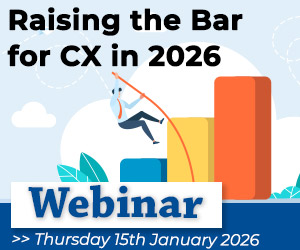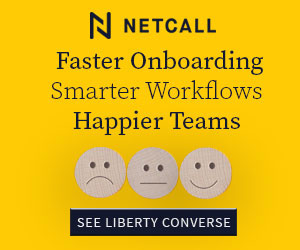Simon Beeching introduces DTMF ‘card payment by phone’ technology, highlighting its impact on the customer experience and handle times.
I am often asked whether consumers using DTMF ‘keypad payment by phone’ systems like them; whether there are any barriers to take-up; and whether it increases or reduces Average Handling Time (AHT) in contact centres. Taking these in turn:
Customer Preference and Experience
Consumers generally hate reading their card numbers out over the phone to a call centre. They’re aware of the dangers of data breaches and criminals selling their data, and if they are anywhere they can be overheard (such as the office or a train) it’s doubly uncomfortable.
Syntec annual research shows that people are increasingly reluctant to complete the transaction if they have to read their card numbers out aloud to make payment.
DTMF touchtone entry (‘dual tone multi frequency’) by the customer of their own card numbers, discreetly and privately on their own phone keypad, is instinctively more secure. This is evidenced, for instance, by feedback from Miele’s customers when they first started using Syntec’s CardEasy service:
“Oh OK, that’s a good idea – it’s nice to know my card details are kept safe.”
“I wish more companies handled my card security this way.”
But is there any hesitation about using this new payment methodology? For instance, do older people find it harder to grasp? The answer is no, as people of all ages have already become accustomed to using DTMF for entry of (for instance) letters from their phone banking password. So, it’s a known financial security procedure – again, as shown by Miele, where 95% of its transactions went through using CardEasy on day 1 of launch. And, of course, once your customers have used it once, they’ll know in future that this is how you do it.
Overall, feedback from merchants using CardEasy is that whilst it may take agents and customers a little while to get used to it, this is easily overcome by agent training to help customers over the newness of it, or by rolling it out to agents in batches on a ‘train the trainer’ basis to learn how your own customers react and to share objections or tips, so that the process becomes easier as each team takes it on.
Average Handling Time
Almost universally, merchants tell us that DTMF payment technology either has no impact on or actually reduces AHT either immediately or once training and experience have kicked in. This is also the industry feedback from users of one or two other DTMF systems which work in a similar way to CardEasy (but of course not quite the same or as well!).
There are a number of reasons why DTMF capture of the PAN and CV2 can shorten the call and should make your call centre more efficient, providing you with an important cost benefit (as even a few seconds saved on each call rapidly mounts up):
- Card numbers can be misheard or mis-transcribed by agents when customers read them out, for instance due to background noise, strong accents, reading them out too quickly or quietly, if a mobile phone’s signal is weak, or if the customer simply reads them out incorrectly.
- Any mistakes in the numbers will then be copied over by the agent and the card number will be rejected, so they have to go back and start again.
- Agents often read the card numbers back to the customer first, to check they’ve got them right – effectively taking the number down twice from the customer and lengthening the call unnecessarily. Using DTMF cuts this from two procedures to one, as the customer enters their own card numbers, preventing the need for someone else to take them down before entering them.
- As well as eliminating this agent process, CardEasy performs a dynamic lookup of the Bank Identification Number (BIN) after the first six digits of the PAN have been entered, informing the agent of the card issuer and scheme as a fraud-prevention measure. When PAN capture is complete, it also performs a Luhn check on the card number and informs the agent visually of the pass/fail status. This helps identify mis-keying and digit transposition and these two checks combined make the process even shorter and more efficient.
Unlike other DTMF systems, with a typical CardEasy deployment there is also no interruption in your usual call-flow. Other systems can require the agent to hand off the call to a separate secure payment system or ask the customer to wait whilst they put the call into ‘secure’ mode or – worse still – to an automated IVR system, with no way back to the agent if there is a problem.
With CardEasy, the agent simply asks the customer in the middle of the call to enter their card numbers, at the time they’d traditionally have asked them to read them out, so there is effectively no interruption in the customer experience and the agent is on hand to help the customer and can talk to them throughout.
Mid-Call Versus Autopay
We have also advised quite a number of merchants to take advantage of both modes available with CardEasy – mid-call and autopay. Mid-call – taking payment live in the middle of the conversation with the agent – is the normal customer experience we’d recommend for a call centre.
But, in many cases, there is no ‘value add’ in having the agent take the call for payment. For instance for a utility bill, a charity donation, or for a balance payable. In these instances we would recommend using CardEasy autopay, either with your own IVR or Syntec’s.
For many organisations, using autopay instead of or alongside agent-assisted ‘mid-call’ reduces their call centre costs significantly. For example, where it’s important for the agent to take the call for the initial sale and deposit, but for the final balance payable you can simply put on the invoice or email that they should ring the automated payment line.
The DTMF methodology for entering the PAN & CV2 remains the same, just prompted by your IVR messaging using autopay rather than by a live agent (see the CardEasy video demo, 2 minutes in).
Summary
So DTMF payment technology in contact centres not only overcomes consumers’ aversion to reading their card numbers aloud to an agent, it is also be a better experience all round for both customer and agent.
The technology introduces more trust in your brand, as the customer feels more secure and the agent is no longer being nagged to be careful about card data security (as the card numbers simply aren’t there for agents to worry about, or for your call recordings to pick up). And it speeds up the process of payment authorisation in a number of ways too.

Simon Beeching
On top of this there are of course also the PCI DSS regulatory reasons for using DTMF payment technology. Plus, the potential cost savings on PCI audits (as you no longer have any card numbers to secure); and the brand protection afforded by no longer having any card data entering your contact centre environment and available to be stolen, with all the costs associated with card data breaches in terms of PR, customer dissatisfaction and (coming very soon) GDPR fines.
So just like Chip and Pin for Cardholder Present point-of-sale security, DTMF technology for Cardholder not Present (CNP) phone payments is now rolling out across contact centres globally. And, if you are not yet thinking about it then you should, as in a few years’ time customers may be refusing to pay you over the phone unless they can enter their card numbers on the keypad of their own handset or smartphone, as DTMF is set to become the industry standard.
Author: Robyn Coppell
Published On: 26th Oct 2017
Read more about - Guest Blogs, Syntec




































